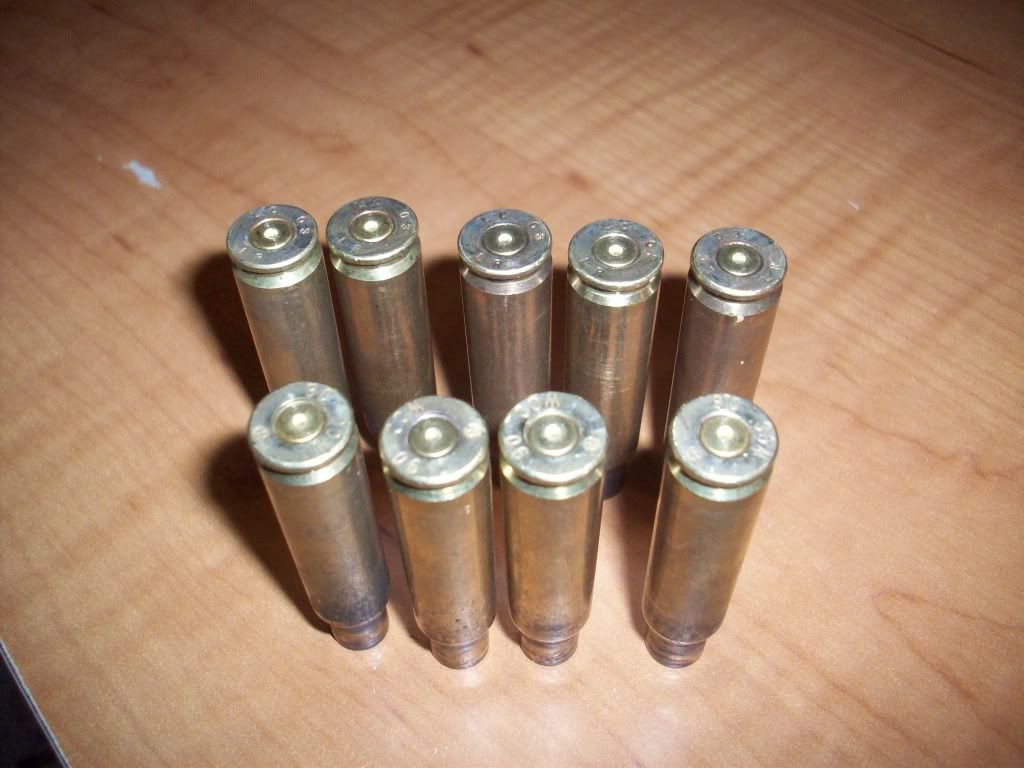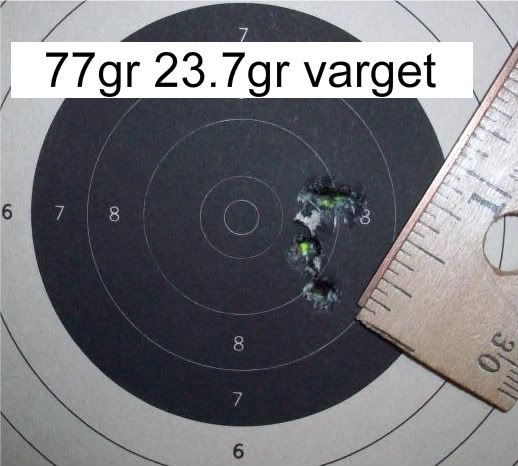I came up with some .308 loads that shoot very well out of my .308 ar, but I am afraid they may be overpressure.
The five cases on the top are lc lr brass and this is the load:
178 amax
43.6gr varget
win wlr primer
2.81"
the four on bottom are wcc nato brass and they are:
175gr smk
43.4gr varget
win wlr primer
2.80"
The lc lr brass is 3x fired and the wcc is 5x fired. I am planning to retire this batch and start with some 1x fired wcc cases for the next batch. The lc lr cases are not shiny and slightly tarnished so I am thinking it should be easy to spot ejector/ extractor marks which are not present. The wcc show light ejector marks, but I noticed those showed up upon intial firing of the q3130 ammo. Ejection is at about 1-2 o clock, but all my empties land there now that I am running the 20" barrel. FWIW, I worked both these loads up to 44gr before I started getting cratered primers and gas leaking around the primer.
Pic:

The five cases on the top are lc lr brass and this is the load:
178 amax
43.6gr varget
win wlr primer
2.81"
the four on bottom are wcc nato brass and they are:
175gr smk
43.4gr varget
win wlr primer
2.80"
The lc lr brass is 3x fired and the wcc is 5x fired. I am planning to retire this batch and start with some 1x fired wcc cases for the next batch. The lc lr cases are not shiny and slightly tarnished so I am thinking it should be easy to spot ejector/ extractor marks which are not present. The wcc show light ejector marks, but I noticed those showed up upon intial firing of the q3130 ammo. Ejection is at about 1-2 o clock, but all my empties land there now that I am running the 20" barrel. FWIW, I worked both these loads up to 44gr before I started getting cratered primers and gas leaking around the primer.
Pic:




